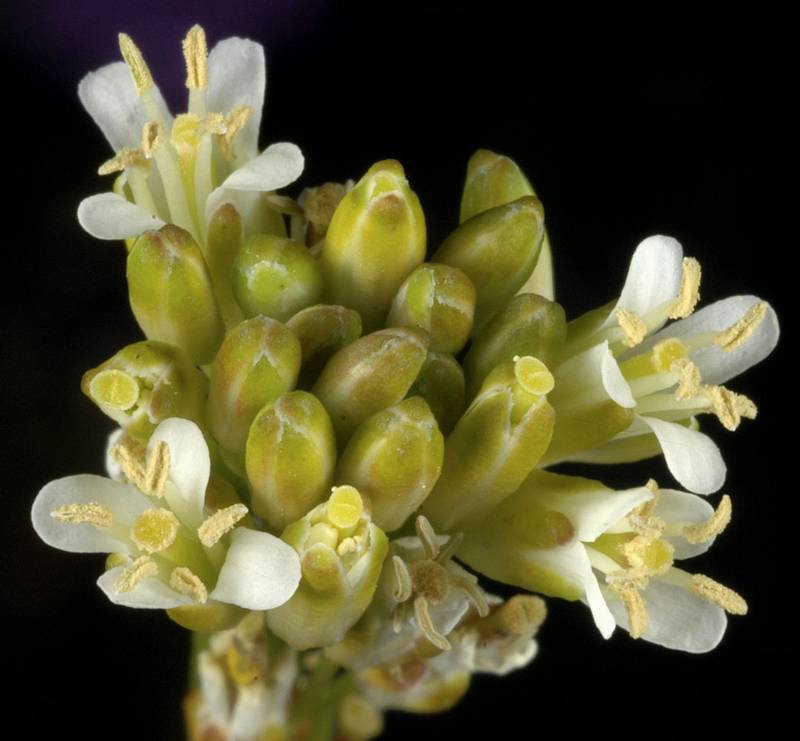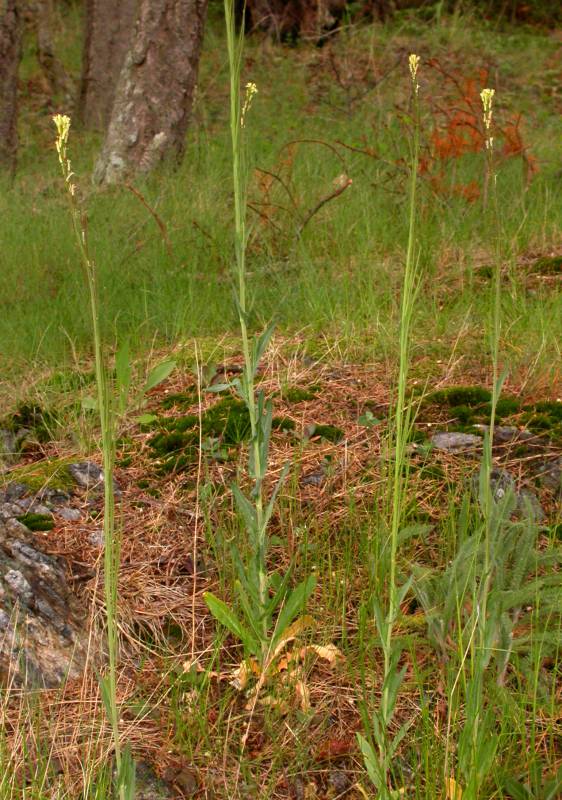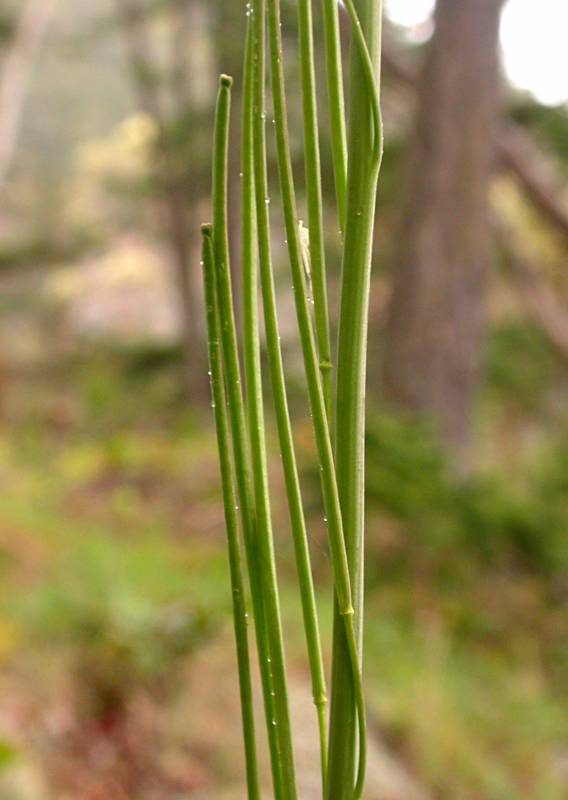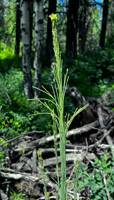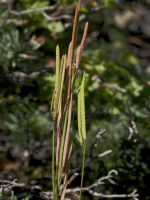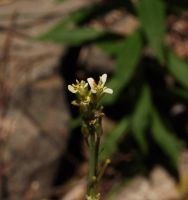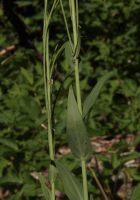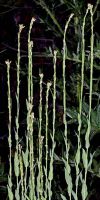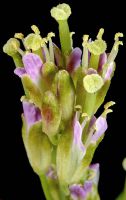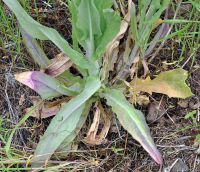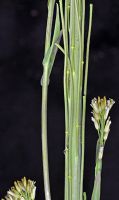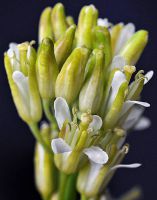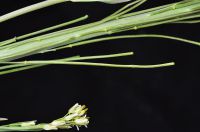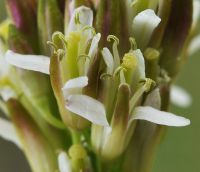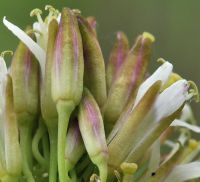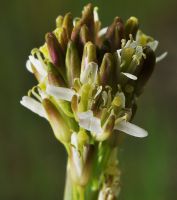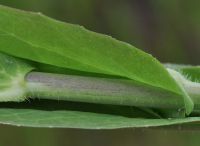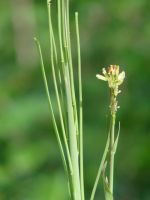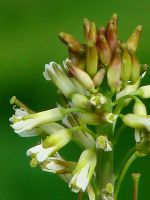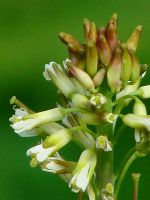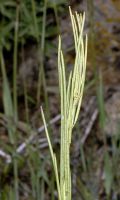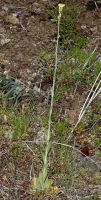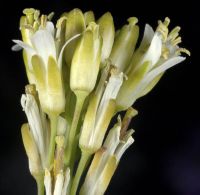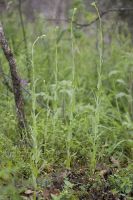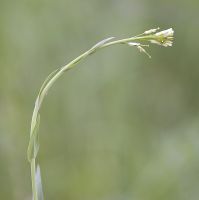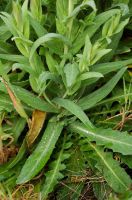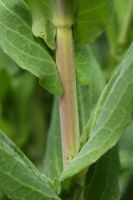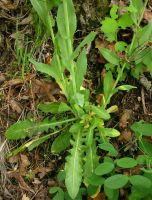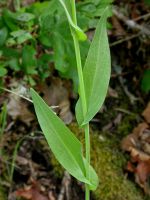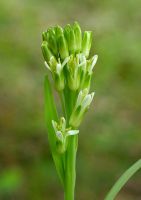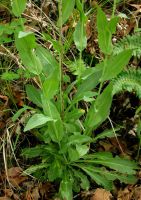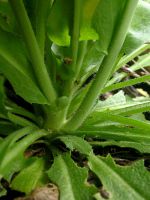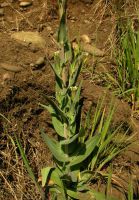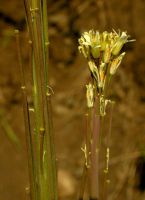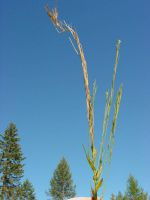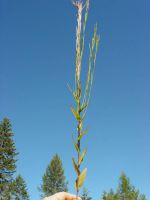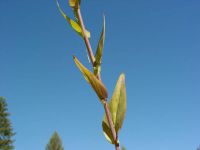Distribution: Occurring on both sides of the Cascades crest in Washington; Alaska to northern California, east to the Rocky Mountains, northern Great Plains, and eastern North America.
Habitat: Seasonally moist, sometimes rocky, soil in open woods, clearings, and grassy balds.
Flowers: May-July
Origin: Native
Growth Duration: Annual, Biennial, Perennial
Conservation Status: Not of concern
Pollination: Bees, flies, butterflies
Biennial or short-lived perennial from a simple crown, the stem usually single, simple or branched above, 3-15 dm. tall, pubescent with stiff, simple hairs at the base, becoming glabrous above.
Leaves mainly cauline, the basal ones oblanceolate, 3-14 cm. long, usually remotely toothed, the blade narrowed to a short, winged, greenish petiole, pubescent with a mixture of simple and stellate hairs; cauline leaves alternate, overlapping, lanceolate to ovate-lanceolate, 5-15 cm. long and up to 4 cm. broad, sessile and conspicuously auriculate.
Inflorescence a many-flowered raceme, up to 6 dm. long in fruit; pedicles slender, 5-12 mm. long; sepals 4, 3 mm. long, not gibbous at the base; petals 4, cream colored, 5-6 mm. long; stamens 6; style 1-1.5 mm. long.
Siliques glabrous, 6-10 cm. long and 1-1.5 mm. broad, 1-nerved nearly full length; seeds in 2 series, 1-1.5 mm. long with a winged margin 0.2 mm. broad.
Publication: Sp. Pl. 2: 666. 1753.
Arabis glabra (L.) Bernh. var. furcatipilis M. Hopkins
Arabis glabra (L.) Bernh. var. glabra [ILBC2]
PNW Herbaria: Specimen records of Turritis glabra in the Consortium of Pacific Northwest Herbaria database
WA Flora Checklist: Turritis glabra checklist entry
OregonFlora: Turritis glabra information
E-Flora BC: Turritis glabra atlas page
CalPhotos: Turritis glabra photos

